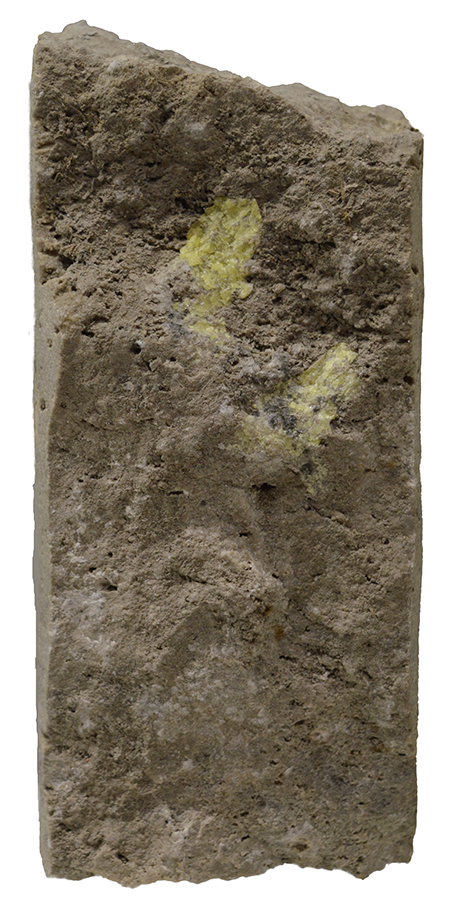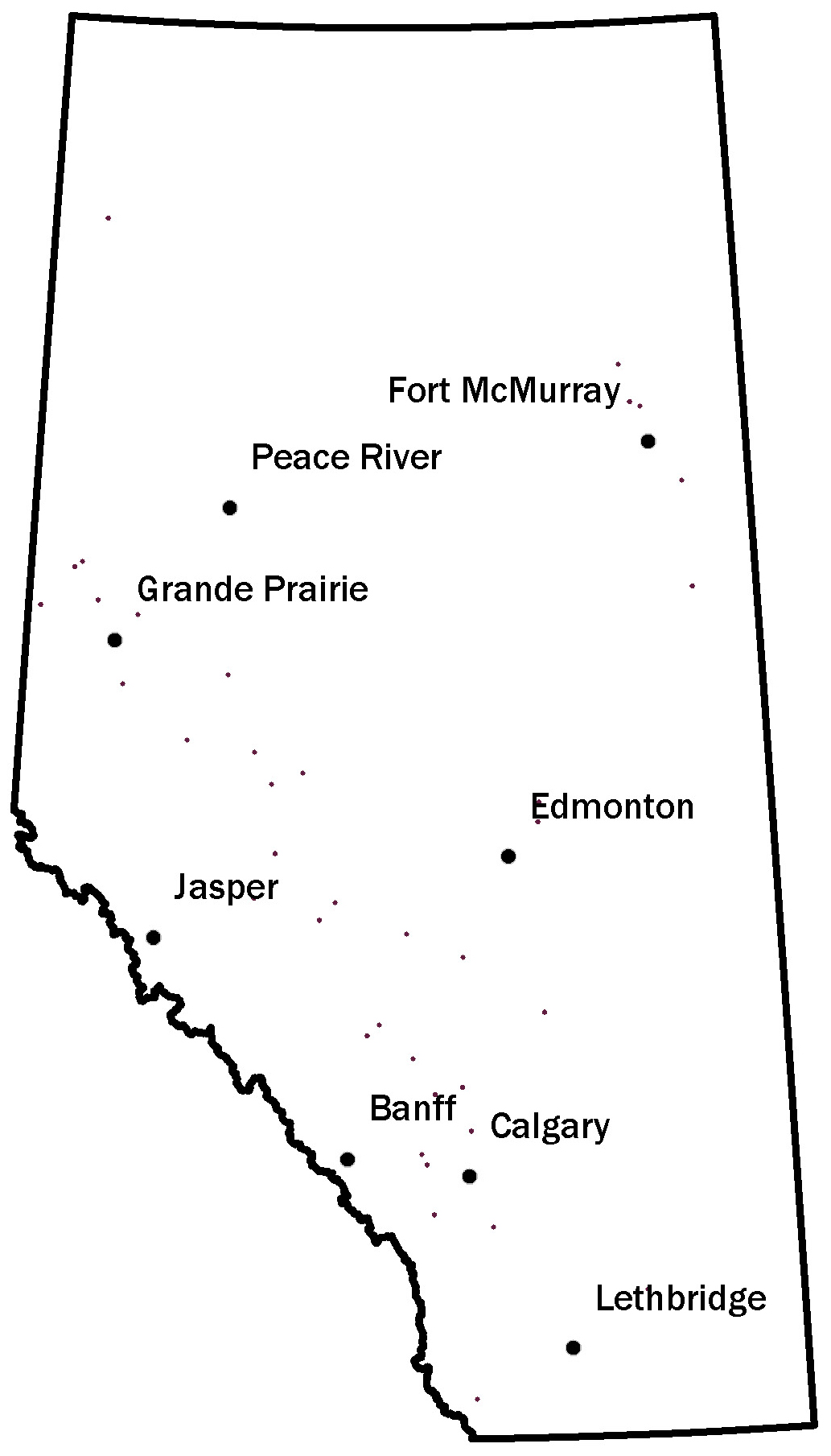![]()
Sulfur from a natural gas plant in Alberta. The block is about 40 cm tall.

Natural sulfur in dolomite drill core from the Sunbeam No. 1 Well, Leduc, Alberta. Core is 15 cm in diameter.
Composition
The sulfur produced in Alberta is in elemental form. Sulfur may be found in nature in elemental form or as a component of sulfide minerals.
Age and Formation
Most sulfur is produced as a byproduct of processing natural gas, oil, and oil sands. If you’re going down the highway and see large yellow piles of material, it’s likely sulfur.
Important properties
Sulfur can be mixed with solvents to produce many useful products. It is not affected by most acids, it burns in the air, and is not corrosive in dry form. Sulfur is a dehydrant, doesn't dissolve in water, and has a high boiling point which limits loss due to steam production when making products. It can be recycled and concentrated for reuse.
Uses
Fertilizer is the most common product made from sulfur. Sulfur is in sulfuric acid used for many industrial applications, agricultural and industrial chemicals, soaps and detergents, bleaching agents, polymers, medicine, fireworks, gunpowder and other explosives. It is also used to refine petroleum. Humans have used sulfur for over 6000 years; it was used early on as a fumigant pesticide, and for medicinal, ceremonial, and religious purposes.
It’s a Fact!
Alberta produces about 4 million tonnes of sulfur per year making it the largest producer in Canada. British Columbia is the second largest producer, but produces 10 times less sulfur than Alberta annually.
Discover!
The Dangers of Mining Sulfur on a Volcano in Java
Plastic Made of Sulfur and Canola Oil
Where to find sulfur
